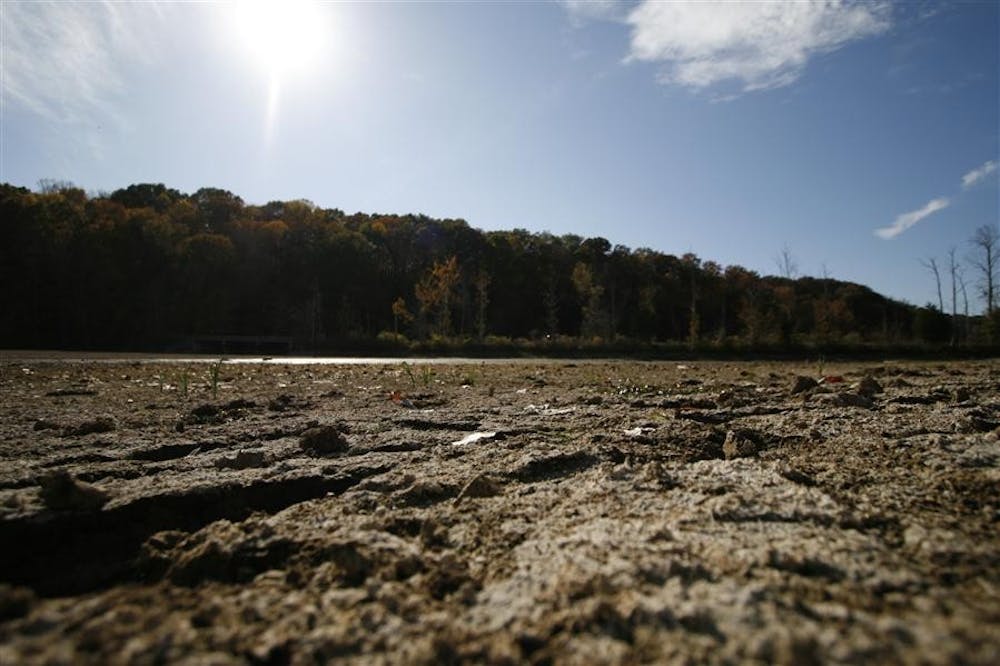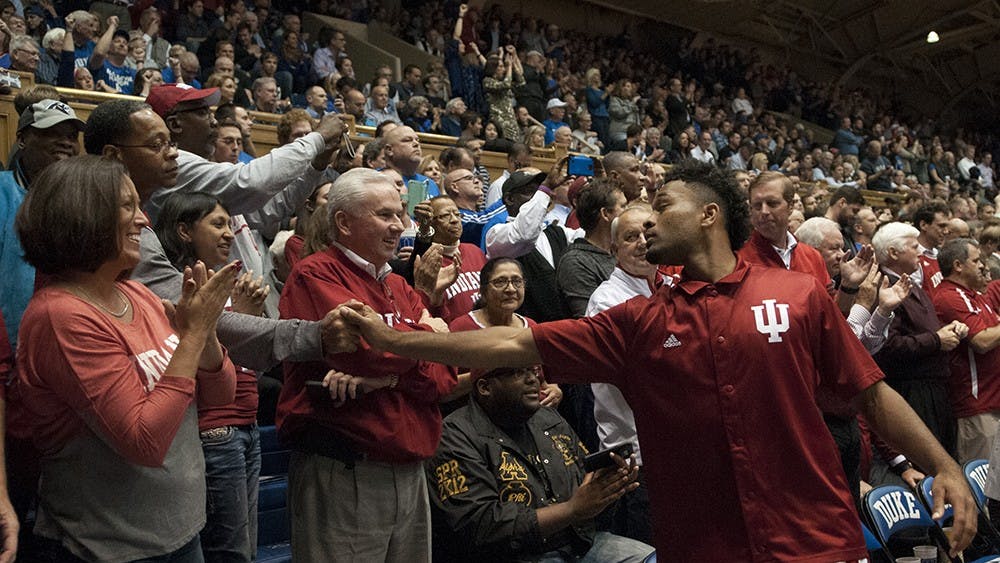David Fell, owner of B.G. Hoadley Quarries, is praying for rain.
The owner deals with water on a daily basis — about 100,000 gallons of it — and constantly has his eye on precipitation in the area.
When the land gets dry, he takes note.
Consequently, Fell was not surprised when a letter came in the mail last week, addressing the Monroe County water shortage warning.
The letter, sent by the state, requested his company reduce water usage 10 to 15 percent.
With a lack of significant rainfall in months, Fell said he expected the state to take action.
Similar letters were sent to businesses and local government organizations that use more than 100,000 gallons of water a day.
The locations included Hoosier Energy, Victor Oolitic Stone Company, Eagle Pointe Golf Resort and the City of Bloomington.
The Indiana Department of Natural Resources and the Indiana Department of Homeland Security monitor drought stages.
DNR communications director Phil Bloom said there are three advisory levels: a watch, warning and emergency.
Areas that receive 1.5 to 1.99 inches of precipitation below the monthly average fall into the warning stage.
Despite light rainfall this month, Monroe County is still stagnant in this stage. Bloomington has been in a 8.68 inch rain deficit since July 1, according to a report from the National Weather Service of Indianapolis.
“The goal of these notifications is nothing more than a heads up,” Bloom said. “The goal is to get people to voluntarily cut back. We certainly hope they would take some measures.”
While the DNR hopes for compliance, they aren’t enforcing reductions. As a result, responses around the county to the water shortage warning vary.
Fell said B.G. Hoadley Quarries have always been mindful of water conservation. In September, they began reducing water usage during overtime hours.
Their main source of water, used to cool their saw blades and belts, is drawn from quarry holes supplied by rainwater and is recycled, Fell said.
However, in dry times, the company must supplement their supply from Bloomington’s water system — about 40,000 gallons a day.
Water supply and the expenses for city water will be a concern for Fell if dry conditions continue.
“If we get even an inch of rain it’ll fill up a quarry wall, and we’ll be all right for 40 days,” he said.
John Langley, deputy director of city utilities, said city officials have also reviewed the letter but do not anticipate shortages in the systems they serve.
“We’re blessed with a water source,” Langley said, referring to Lake Monroe, the city’s water source for more than 40 years. “We should note that the shoreline is down two feet in the lake and that does not present any problems to us.”
Experts agree that a water shortage would be more severe if it were June instead of October.
The growing season is done, and people are past the point of watering their lawns, said Al Shipe, a service hydrologist at the National Weather Service of Indianapolis.
“We’d have to have this continue for three more months and have another hot, dry spring season, and then there would be a serious situation,” Shipe said.
Besides the water shortage, the service hydrologist warns of a more pressing effect of the drought — fire danger. Monroe County has been under a burn ban since Sept. 23.
“The fire danger is similar to what we had in ’99, and possibly as bad as ’88,” Shipe said. “The DNR said 1988 was the worst fire season on record.”
Rain clouds loom in the near future, and the current forecast calls for rain Saturday through Thursday, Shipe said.
Although conditions look to improve, Bloom urged city residents to be aware of water conservation.
“Be mindful when using water for showers and brushing teeth,” Bloom said. “Any conservation of water by an individual would have a cumulative effect.”
Businesses told to comply with water conservation efforts during drought

Get stories like this in your inbox
Subscribe





